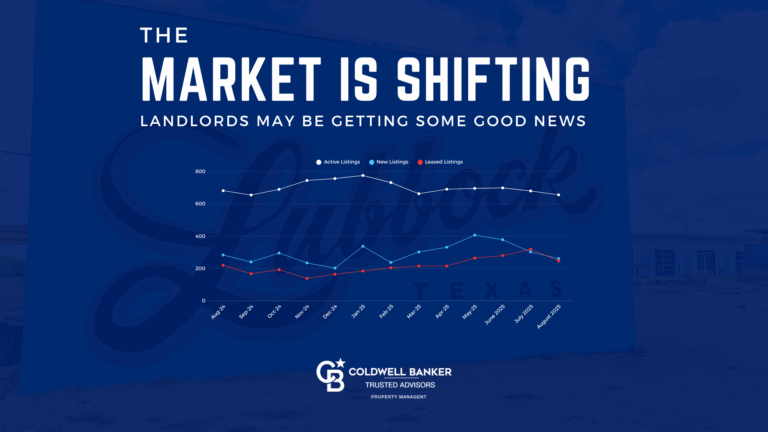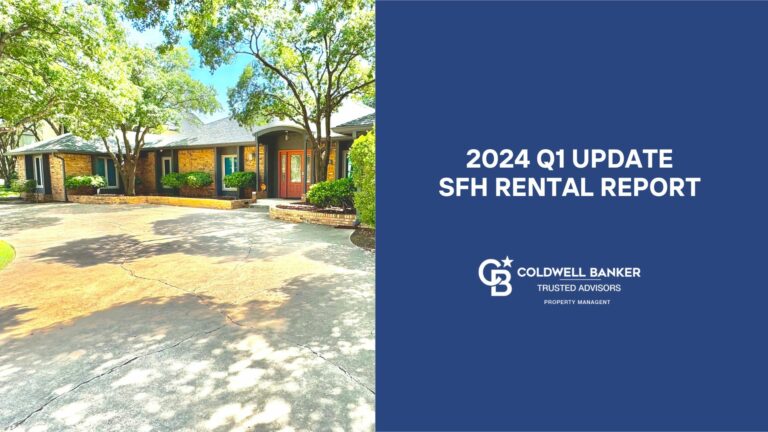
The rental market can be a complex and competitive industry, with various factors affecting the supply and demand for rental properties. It is essential for property owners and managers to regularly analyze their rental business in order to identify areas for improvement and to ensure that they are maximizing their profits. In this analysis, we will examine various data points and trends to gain a better understanding of the current state of the rental market and to make informed decisions about our rental property.
The following report has been compiled through MLS data and only includes Lubbock County. This report does not take into account the Apartment Market in Lubbock.
Overall Assessment
Overall rental rates have increased by 8%. Individual areas of Lubbock average around 8%, with SE Lubbock having the highest appreciation of 12%. The average rent in Lubbock is $1350. More rental properties have come on the market, and the increase in rented properties was well below the number of properties on the market.
Three-bedroom homes are the most popular rental in Lubbock, followed by 2 and 4 bedrooms.
Rentals Listed
2022 | |
3338 | |
1 Bed | 223 |
2 Bed | 706 |
3 Bed | 2049 |
4 Bed | 349 |
5+ Bed | 11 |
Rented
2022 | |
2282 | |
1 Bed | 160 |
2 Bed | 562 |
3 Bed | 1333 |
4 Bed | 218 |
5+ Bed | 9 |
Rentals Listed
2021 | |
2612 | |
1 Bed | 202 |
2 Bed | 720 |
3 Bed | 1435 |
4 Bed | 239 |
5+ Bed | 16 |
Rented
2021 | |
2612 | |
1 Bed | 202 |
2 Bed | 720 |
3 Bed | 1435 |
4 Bed | 239 |
5+ Bed | 16 |
Market Activity and Demand
There is still a healthy level of market demand, but we are starting to see a decrease. The absorption rate decreased from 2021 – 2022. Down 16% from 84% to 68%. The last half of the 2022 year exploded with new properties. There was a 55% increase in inventory from the same time in 2021. The number of properties leased in the last half of 2022 only showed a 23% increase from 2021. With new rental developments all around Lubbock, inventory will only increase. With new homes flooding the market, this will leave a gap in older properties that are not as well maintained.
RENTED BEDROOM COUNT
Bedrooms | Count | Avg Rent | Dollar Per Square Foot | Avg year Built | DOM | Per Room | Absorption Rate |
1 Bed | 160 | $605 | $1.07 | 1953 | 54 | $605 | 74.6% |
2 Bed | 562 | $979 | $.92 | 1972 | 38 | $489 | 79.8% |
3 Bed | 1333 | $1501 | $1.10 | 1990 | 43 | $501 | 65.8% |
4 Bed | 218 | $1922 | $1.0 | 1984 | 46 | $480 | 60.06% |
5+ Bed | 9 | $1639 | $.91 | 1969 | 46 | $327 | 81.8% |
RENTED RENT RANGES
Rent Range | Count | Avg Rent | Median Rent | Avg Age | DPSQFT | DOM | Absorption Rate |
750-900 | 200 | $832 | $850 | 1962 | $.90 | 38 | 78.8% |
901-1000 | 145 | $967 | $950 | 1969 | $.88 | 45 | 75% |
1001-1200 | 317 | $1131 | $1125 | 1972 | $.93 | 44 | 81.6% |
1201-1300 | 216 | $1276 | $1295 | 1980 | $.94 | 44 | 67% |
1301-1400 | 230 | $1380 | $1395 | 1988 | $.97 | 44 | 68% |
1401-1500 | 304 | $1480 | $1498 | 1997 | $.99 | 41 | 58% |
1501-1600 | 188 | $1577 | $1555 | 2001 | $1.01 | 43 | 66% |
1601-1800 | 222 | $1716 | $1700 | 1999 | $1.04 | 42 | 61.4% |
1801-2000 | 106 | $1926 | $1900 | 1992 | $1.08 | 52 | 59.4% |
2001-2200 | 34 | $2144 | $2195 | 2005 | $1.07 | 51 | 32% |
2201-2500 | 46 | $2379 | $2400 | 1991 | $1.13 | 51 | 51% |
2501-2750 | 13 | $2629 | $2600 | 1985 | $1.17 | 53 | 83% |
$2750+ | 13 | $3021 | $2988 | 2005 | $1.23 | 34 | 50% |
RENTED YEAR BUILT
Year Built | Count | Avg Rent | Median Rent | DPSQFT | DOM | Absorption Rate |
< 1950 | 348 | $1096 | $1000 | $1.03 | 60 | 78.8% |
1951-1960 | 341 | $1173 | $1175 | $.90 | 47 | 79% |
1961-1970 | 197 | $1130 | $1140 | $.88 | 49 | 76% |
1971-1980 | 238 | $1152 | $1200 | $.89 | 46 | 73.9% |
1981-1990 | 180 | $1183 | $1150 | $.92 | 37 | 78.2% |
1991-2000 | 131 | $1385 | $1350 | $.99 | 43 | 77.9 |
2001-2010 | 277 | $1452 | $1400 | $.95 | 36 | 82% |
2011-2020 | 351 | $1579 | $1500 | $1.04 | 38 | 68% |
2020< | 268 | $1665 | $1595 | $1.06 | 47 | 36% |
Future Outlook
Based on current trends and market data, it is expected that rental rates in Lubbock will continue to rise for new/newer properties that are well-maintained. I am not sure they will increase at the same rate as in 2022. We are also starting to see a decrease in rentals that are below the average rent. Now, it looks as if rents under $1200 will start to soften and even fall. I guess this point has been hit harder by the inflation of grocery prices. Rents between 1300 and 1500 should be able to see rental rates increase. This price point seems to be least affected by inflation.
With interest rates expected to keep increasing, the Fed will be swinging for the fences to slow down the market. I see a market where more homes, both owner-occupied and non-owner-occupied, will be held because of low-interest rates from previous purchases and refinances. Owners who entered the rental market at lower prices and interest rates should be able to weather the pendulum swing of a slower rental market and possibly falling rents.
Investors with outdated properties or deferred maintenance rentals will be hit the hardest and experience higher vacancy rates. If you find yourself with a property in these categories, you should avoid racing to the bottom of the market by dropping rents. Instead, re-investing in your rental property to increase rent will most likely get you a better return on your investment.
Owners purchasing new or newer construction will see that their cash flow will not be substantial. Still, they should expect lower vacancy days and more significant appreciation in home values.
Tenants will have more inventory to choose from in 2023. The issue facing 2023 will be “options.” There will be many options, and in the absence of value, rentals will be chosen by price. You must add value to tenant prospects.




Oscar, thanks for your update. I’m surprised by the SE having the largest increase in rents. I think we can still get a rate increase on the next cycle. I don’t think there are too many houses with a basement and 2400+ sq feet. Here’s to a Happy and prosperous New Year…Ted
We will be looking to increase rents. We are looking to increase 5.5%-8.5% in renewals this year. Some of these increases are an attempt to catch up on 2020 and 2021 when it was more difficult to get rent increases.
This is very helpful information. Thanks, Oscar! Quick Question, does the niche rental market of “near-campus” show to be deviating from the stats of the broader market in any significant way?
The 8% rental increase is pretty consistent across the city with the exception of SE Lubbock.